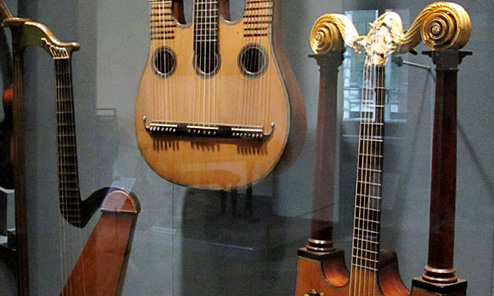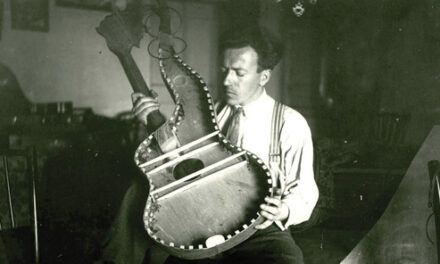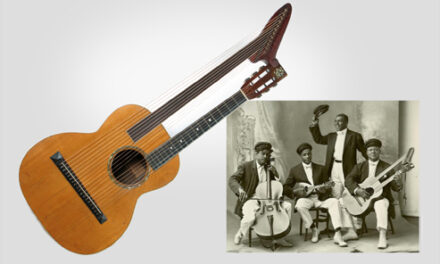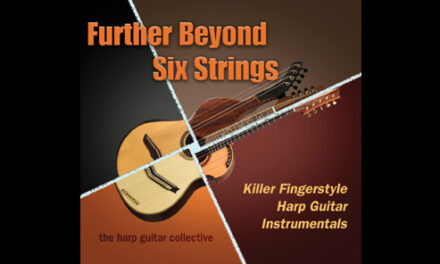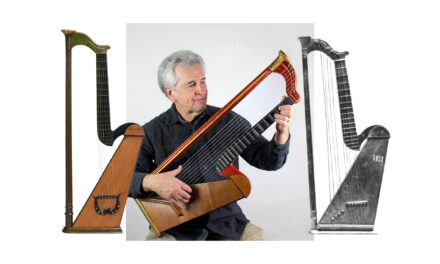During my few days at the Metropolitan Museum of Art for the AMIS/CIMCIM meeting, I would steal up to the musical instrument galleries when I could. The collection holds some 5000 instruments; like most facilities, only 15% or so are on display at any given time. Still, those 800 instruments are pretty nice! One long hall contains mostly European instruments, including lots of strings. To wit:
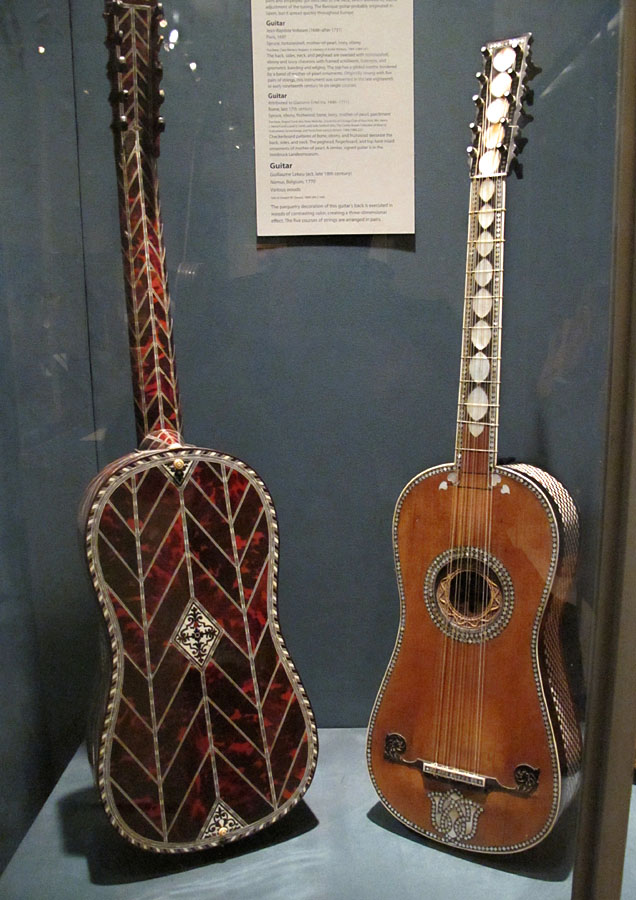
Jaw-dropping Baroque guitars: Left: Voboam (Paris, 1697), Right: Attributed to Giacomo Ertel (Rome, late 17th century)
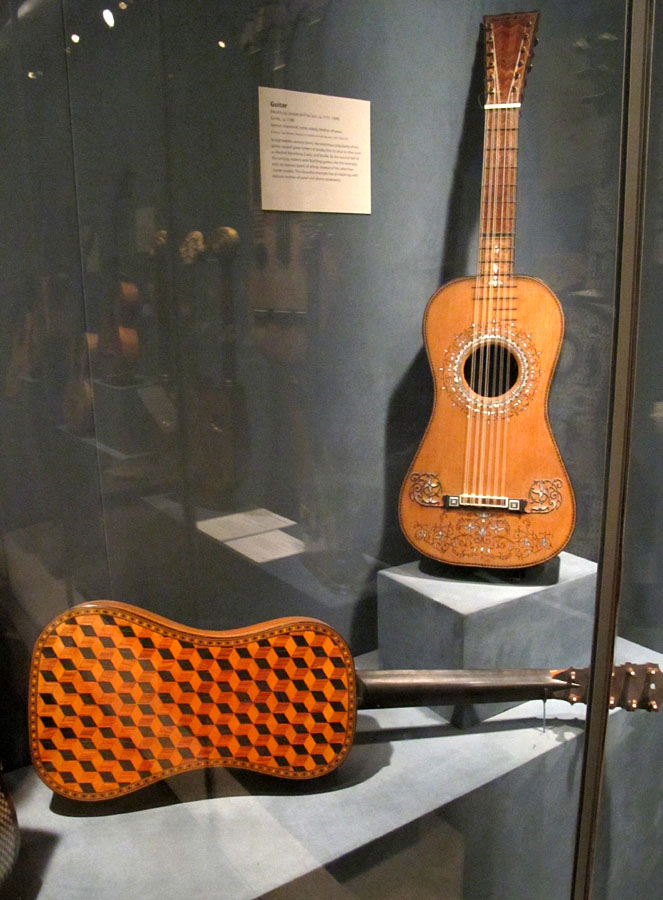
Left: Guillaume Lekeu (Belgium, 1770), Right: 6-course ca. 1780, possibly Joseph de Frías (Spanish, active ca. 1775–1800)
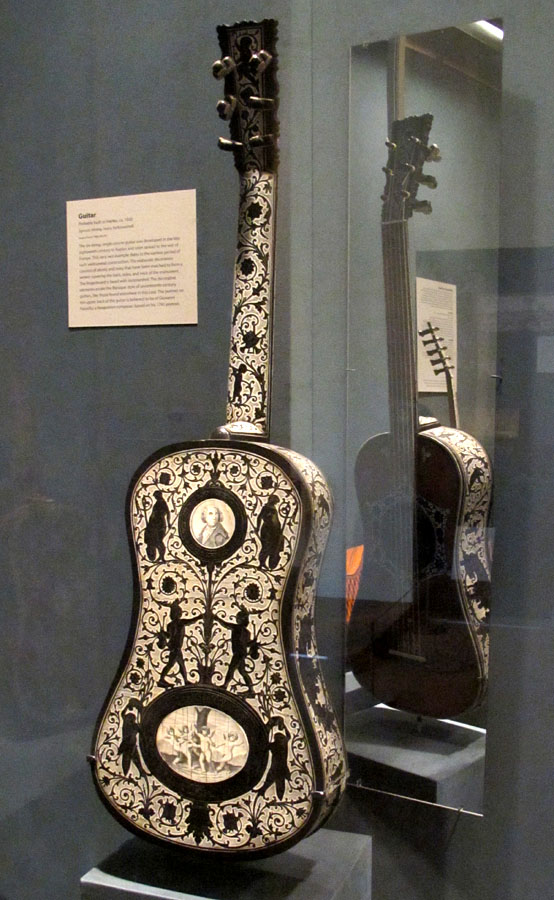
Naples, c.1800
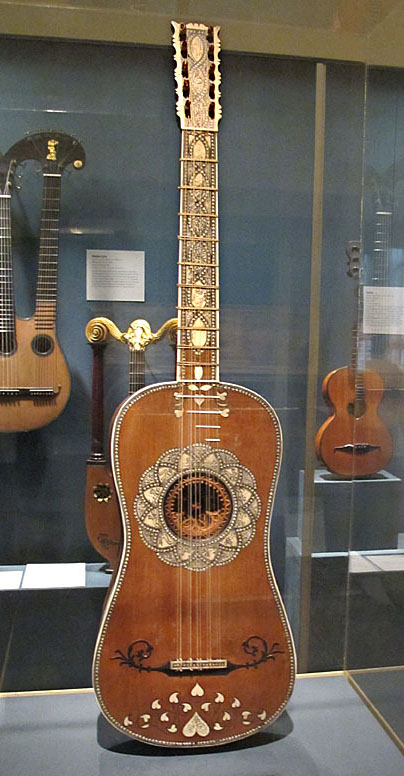
Attributed to Matteo Sellas (Venice, c.1630-50)
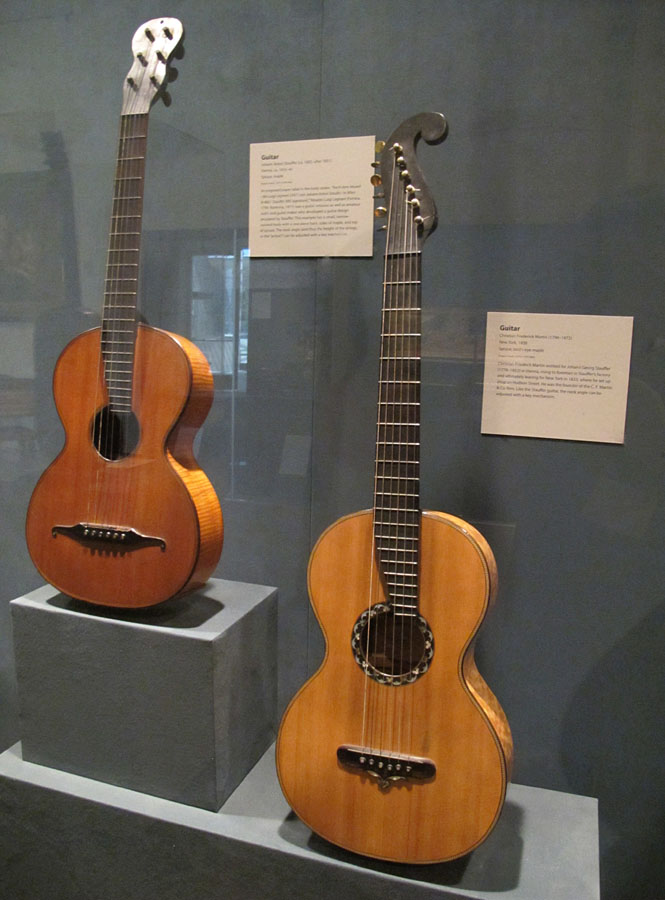
Johann Anton Stauffer, Vienna, c.1835-40 (left) and Martin, New York, 1838 (right)
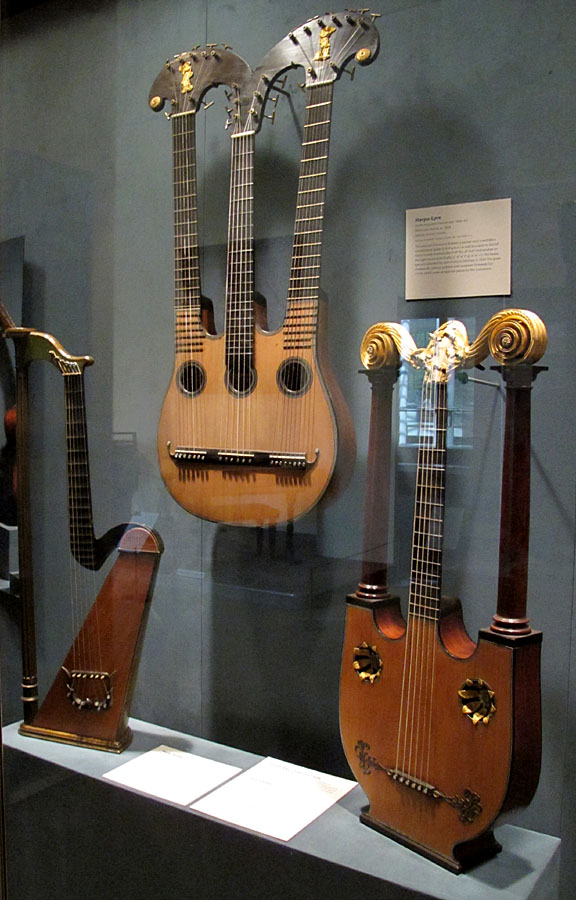
The 1827 Mast fils “harp guitar” (left), Salomon Harpolyre (center) and Pons fils lyre guitar (right)
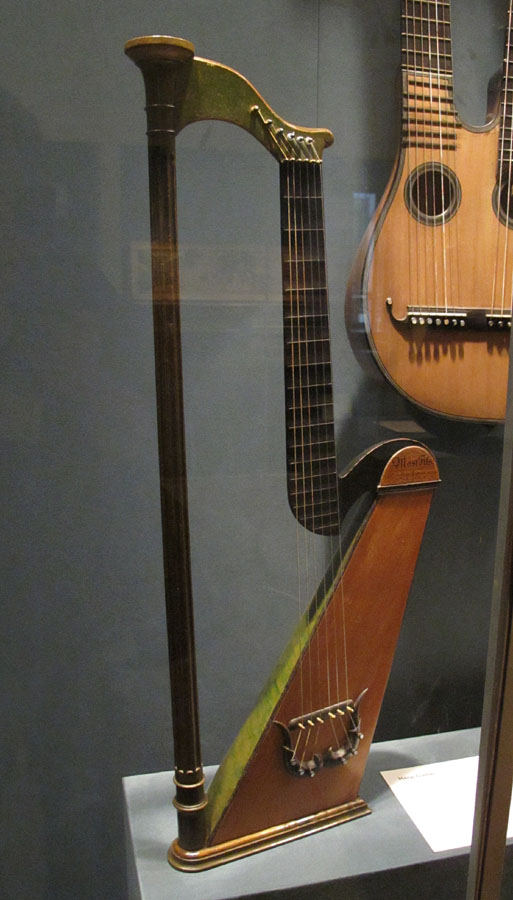
One of my favorite “Harp Guitars in Name Only,” I enjoyed finally seeing the Mast in person, after following it from the Steve Howe book (Steve got it from Tony Bingham, naturally), to the Dangerous Curves exhibit/book, to the Met. I highlighted this in my HG organology talk as a classic example of “terminology with no provenance” (meaning “someone made it up”). Steve Howe’s text referred to it as a “harp guitar,” as next did Darcy Kuronen in his Dangerous Curves Boston MFA exhibit/book; and now it sits on display at the Met proudly labeled “Harp Guitar.” So I teased the group with “So I asked Jayson Dobney (Met’s asst curator) where he got the term...”, after which the following scholarly dialog occurred:
Jayson (shouting from the back of the room): “I got it from Darcy.”
Darcy: “I got it from Tony!” (Bingham, who was sitting next to him)
Much laughter ensued (my goal), but the point was made; it’s not always easy to track down the alleged source of historical nomenclature/terminology “provenance.”
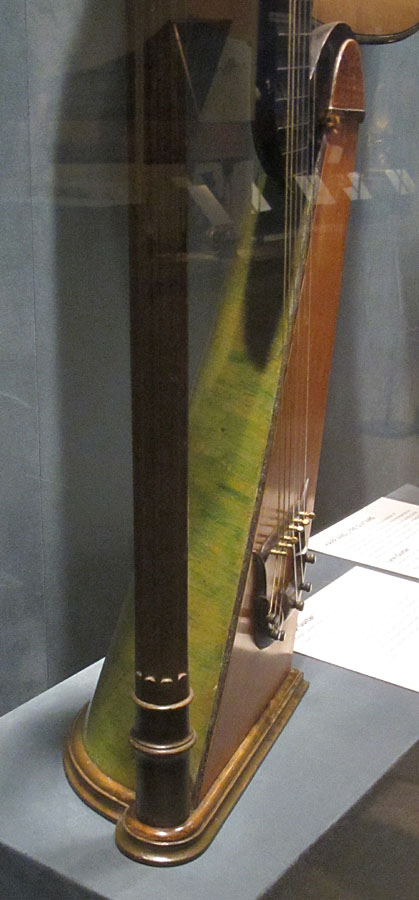
I would not have known how deep the cylindrical “harp” body was without getting this side view. The instrument is also large, as the scale length was pretty much full-size standard guitar.
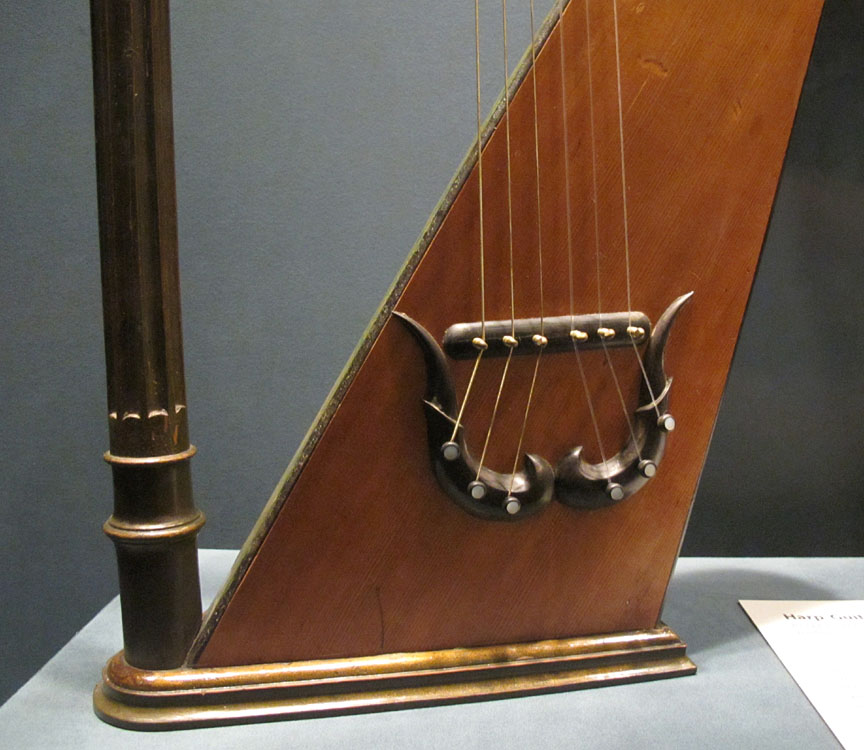
I wonder if this unusual bridge design has ever been used elsewhere? Incidentally, Jayson asked me, “Well then, what should I call it?” I said, “harp guitar” sounds good to me! (I gave 13 definitions for the term during my paper)
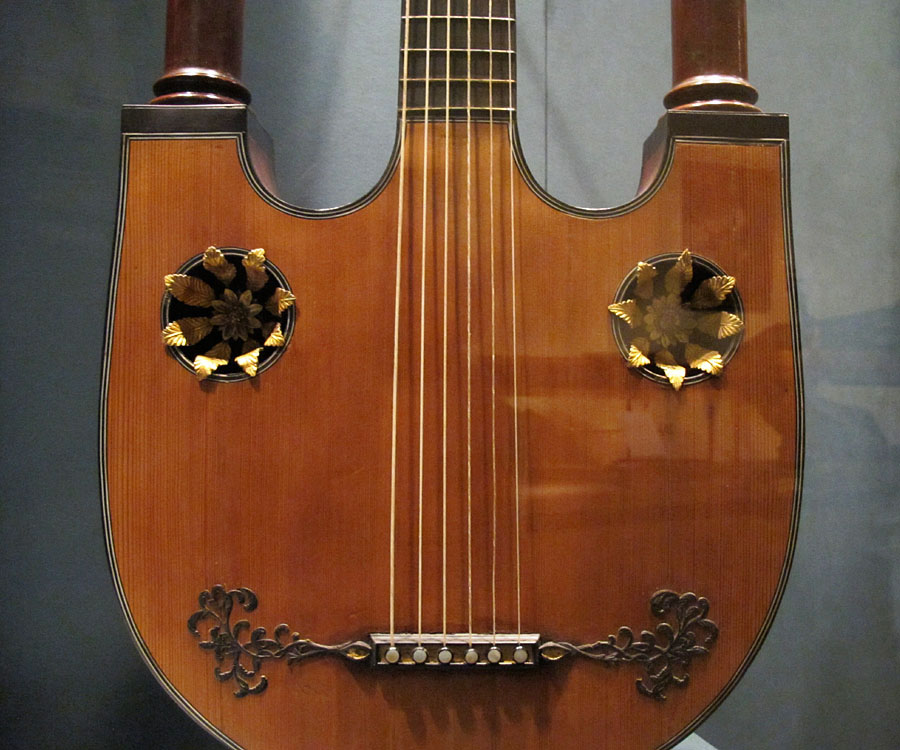
I have never really loved the design of the straight, furniture-like, architectural style of the Pons lyre guitar, but was converted after seeing it in person. It is extremely beautiful and sophisticated. Me want.
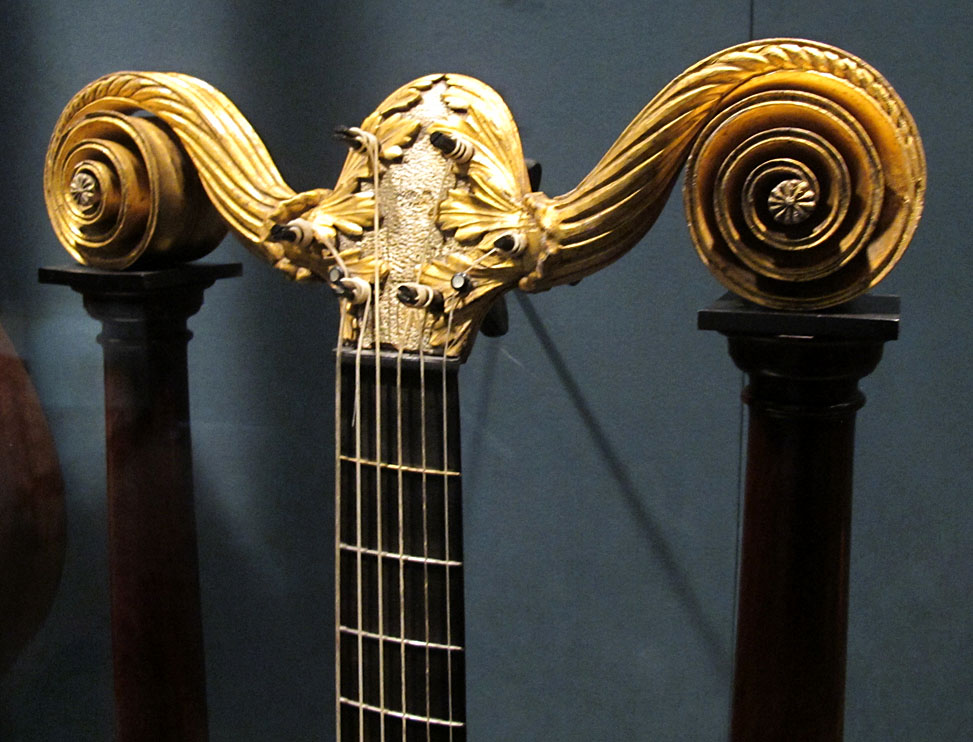
Even the Met’s own photo shown below does not quite do it justice….

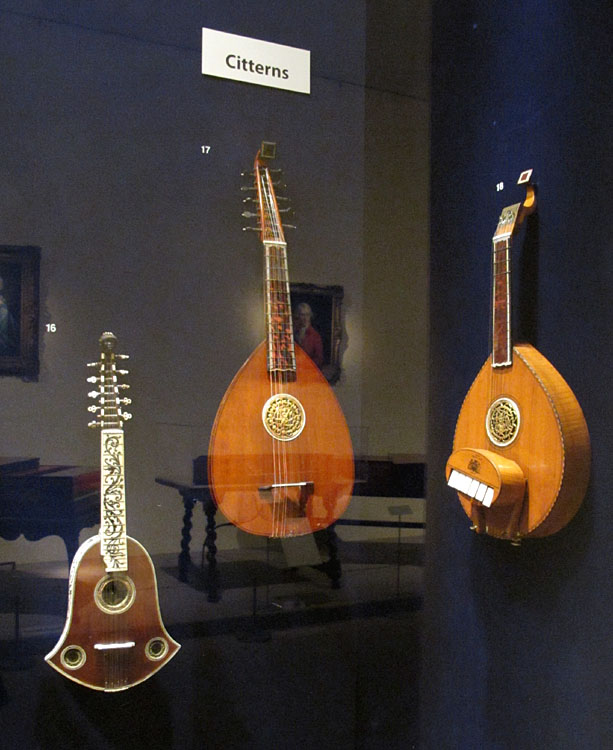
Various “citterns.” The bell version is spectacular, several were built by Joachim Tielke (1641-1719). The others are two classic “English guitars” (tuned to open C), properly spelled English guittar. Not one, but three papers addressed this instrument (much new to me – thanks to Panagiotis Poulopoulos, Daniel Wheeldon and James Westbrook for their research).
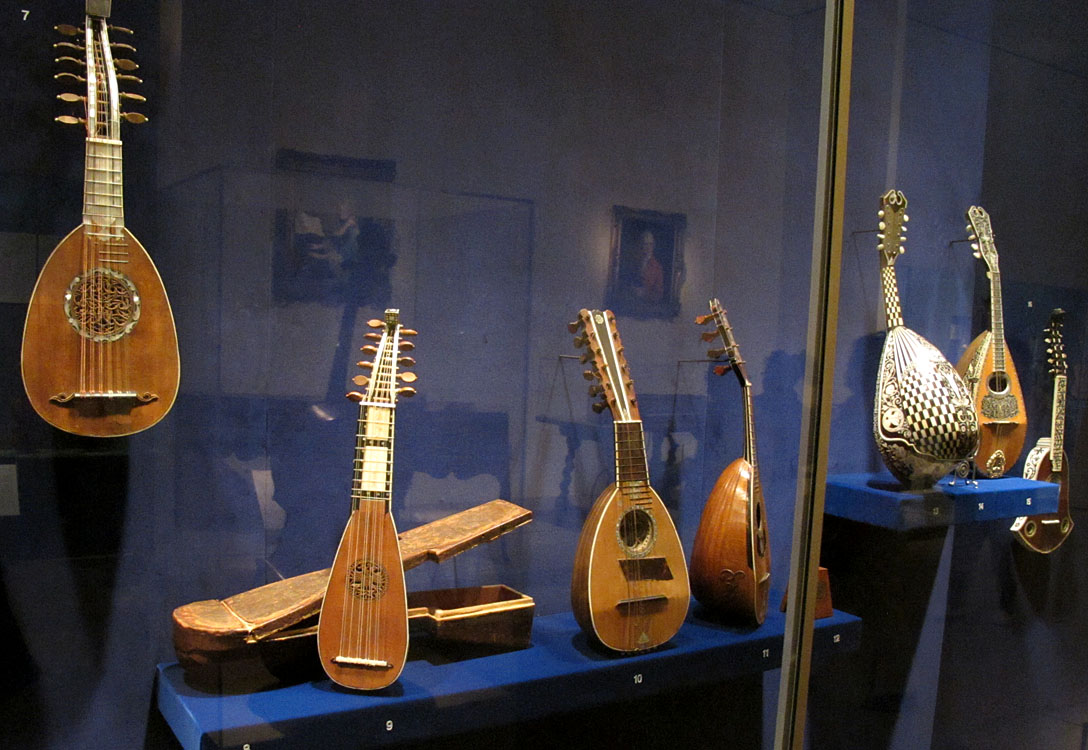
Mandolin family instruments, all fantastic
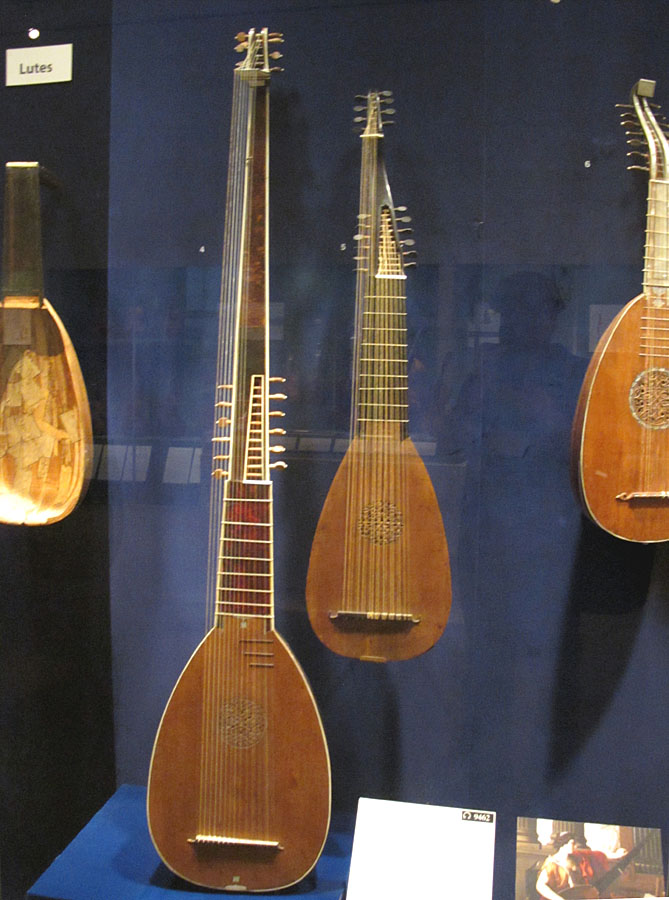
Authentic archlute (Rome, 1725) and swan-neck lute.
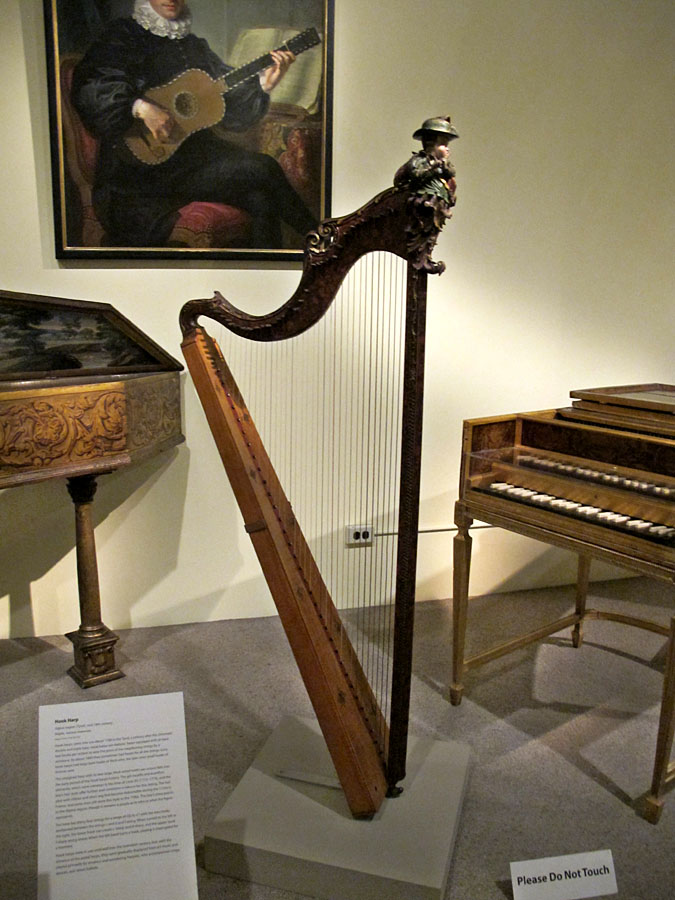
I adore this hook harp, with the adorable carved fife-playing boy at the head.
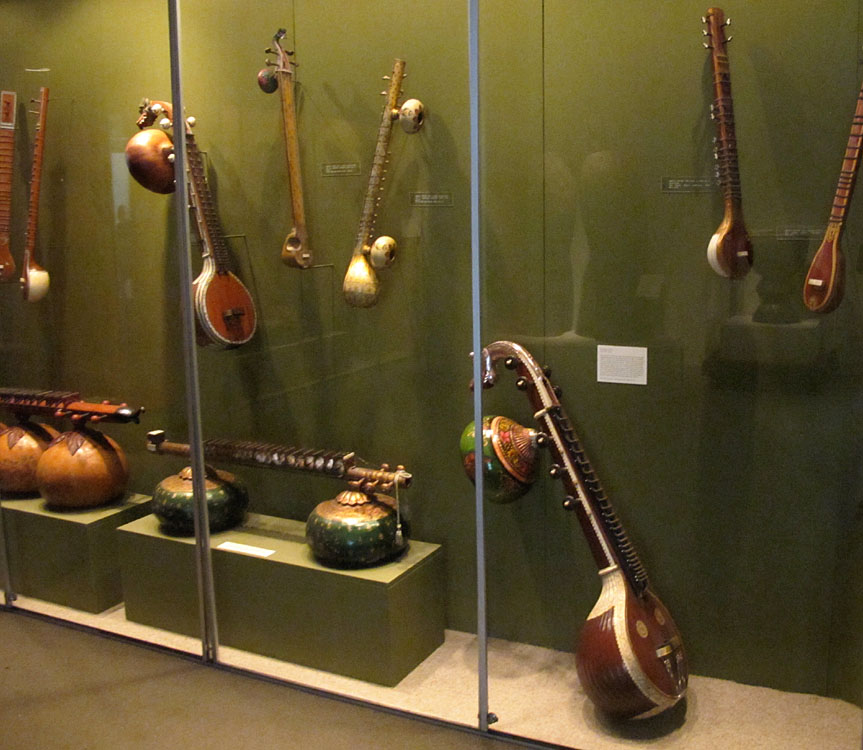
An entire second long hall contained the “ethnic” instruments, and many nice ones. Alas, lighting was too dim for photos. I’d just suggest going yourself!
Next time: Other New York outings…

